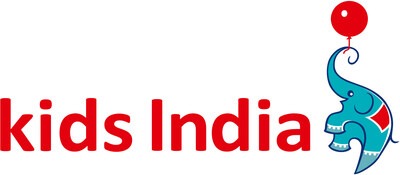
Follow WOWNEWS 24x7 on:

A growing number of non-resident Indians (NRIs) are purchasing health insurance policies in India—not just for their ageing parents, but for themselves. This trend, which has accelerated since 2022, reflects a strategic recalibration of healthcare planning among globally mobile Indians. Driven by rising medical costs abroad, limited overseas coverage during India visits, and improved domestic healthcare infrastructure, NRIs are increasingly viewing Indian health insurance as a practical and cost-effective safety net.
According to recent data from PolicyBazaar and the Insurance Regulatory and Development Authority of India (IRDAI), inquiries and purchases of health insurance by NRIs have surged between 30 to 150 percent over the past three years. The shift is not merely emotional—it’s economic, infrastructural, and anticipatory.
Key Drivers Behind the Shift
- Healthcare inflation abroad is soaring, with the WTW Global Medical Trends Survey 2024 reporting a global average of 10.1 percent
- Employer-provided or global health plans often exclude diagnostics, outpatient care, and pre-existing conditions during India visits
- India’s healthcare system is now globally competitive, with JCI-accredited and NABH-certified hospitals in major cities
- Telemedicine platforms like eSanjeevani have recorded over 10 crore consultations, improving access and continuity of care
- The Ayushman Bharat Digital Mission has enrolled over 45 crore citizens, enabling interoperable digital health records
Why NRIs Are Insuring Themselves in India
Traditionally, NRIs purchased health insurance in India to cover their parents’ medical needs. However, a growing number now recognize the gaps in their own coverage when visiting India. Travel insurance rarely covers routine care or pre-existing conditions, and global plans often impose steep deductibles or deny claims for India-based treatment.
- NRIs visiting India for family caregiving or extended stays face coverage gaps
- Domestic policies offer immediate access to diagnostics, follow-up care, and OPD services
- Indian insurers now allow NRIs to purchase policies while physically present in India, with coverage continuing even after they return abroad
- Premiums for NRIs in their 30s and 40s are significantly lower than co-pays abroad
Cost Advantage: India vs Global Markets
India’s healthcare affordability remains unmatched. Even complex procedures are available at a fraction of the cost compared to the US, UK, or GCC countries. This cost differential is a major factor driving NRIs to seek treatment and insurance coverage in India.
- Heart bypass surgery: $5,000–$8,000 in India vs $70,000–$150,000 in the US
- Knee replacement: $4,000–$6,000 in India vs $30,000–$50,000 in the US
- Liver transplant: $25,000–$35,000 in India vs $300,000–$500,000 in the US
- Annual health insurance premiums: $120–$300 in India vs $8,000+ in the US and $4,000–$5,000 in GCC countries
Changing Demographics and Regional Trends
The surge in NRI health insurance adoption is most pronounced among younger individuals and women. NRIs under 35 have seen a 148 percent increase in policy purchases, while women buyers have grown by 125 percent year-on-year. Interestingly, Tier-3 cities now account for nearly half of all NRI claims, indicating growing trust in smaller urban healthcare ecosystems.
- 46 percent of NRI claims originate from Tier-3 cities
- South Indian cities dominate hospital preferences across all tiers
- Gulf countries account for 60 percent of the NRI customer base, followed by the US, UK, and Singapore
Conclusion: A Strategic Investment in Health
For NRIs, buying health insurance in India is no longer just a gesture of care for elderly parents—it’s a calculated move to safeguard their own health and finances. With world-class infrastructure, digital integration, and unmatched affordability, India is emerging as a preferred healthcare destination for its diaspora. As awareness grows and insurers tailor products for global Indians, this trend is expected to deepen in the years ahead.
Sources: Economic Times, Business Standard, MSN India, The Hindu BusinessLine.





